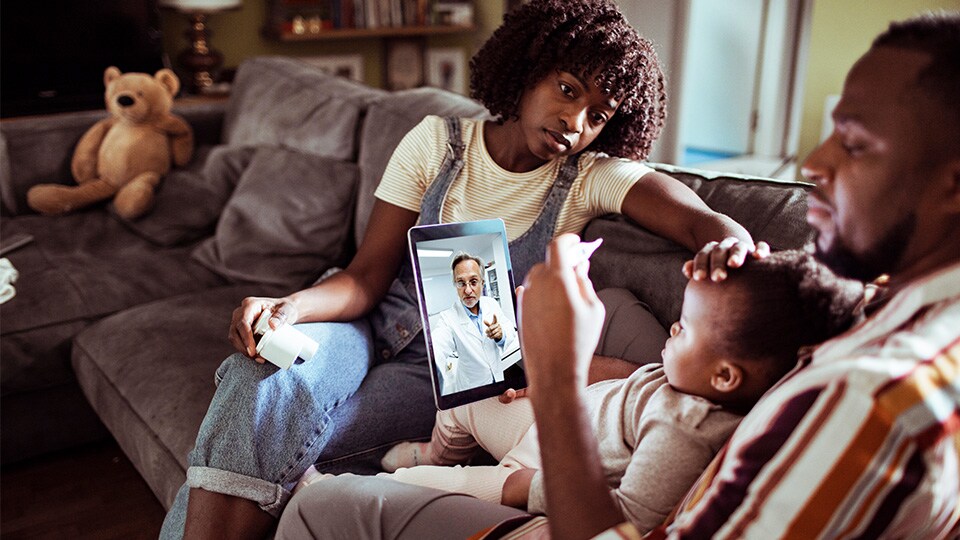A rapid transition towards telehealth
In 2020, avoiding face-to-face care in clinical settings was seen to be crucial to slow the spread of COVID-19. Health systems had to undergo a massive transformation from in-person to virtual visits. By working alongside the Institute for the Future (IFTF) we found in the research we conducted that the growth in virtual healthcare during the pandemic was so vast, it’s almost impossible to overstate how much this shift accelerated as soon as the pandemic hit. This rapid transition is one of the changes most likely to stick in most health systems. Telehealth is now proving too convenient, affordable, and accessible to revert to face-to-face medical consultations. But this new norm for accessing healthcare services will do more than just change how healthcare professionals and patients interact; it will move the primary location of routine care from the clinic to the home. But how do we ensure care continues outside of the health system?

House-pitalists: building the telehealth workforce
By 2030 many individuals and families will expect to receive standard, routine care from their healthcare providers primarily through digital devices.* But even those in need of more complex care will not want to travel to a hospital or a clinic unless necessary. Enter the house-pitalists and the resurgence of house medicine to meet post-pandemic care preferences. House-pitalists will be a key player in the health systems’ multidisciplinary care teams to support people across the care continuum, even those suffering from debilitating chronic illnesses, as they pursue their health at home. They will coordinate all the resources a person needs: referrals to the right doctors and specialists; troubleshooting tech to make sure the person can effectively communicate with their care team and receive care remotely; making sure the person has all the material resources (medications, bandages, assistive technologies, etc.) they need for their health and recovery. Our enterprise telehealth solutions for connected, patient-centered care across the health continuum are already realizing the House-pitalists’ dream of shifting care from the hospital to the home by combining leading technology and data-driven population management with clinical expertise and a proven programmatic approach. The role of House-pitalists will go far beyond just meeting people’s biological or physical health needs. They will also integrate social, psychological, and spiritual wellness resources into the care model to nurture a more holistic understanding of health. As we evolve into a rapid transition towards telehealth, House-pialists will be crucial to bringing humanity to future care systems, ensuring that digitally enabled home care remains people-centric and compassionate. Find out how the other future forces will help shape our future within the Together, Forward report.
*Together, Forward report 2021, Institute for the Future



